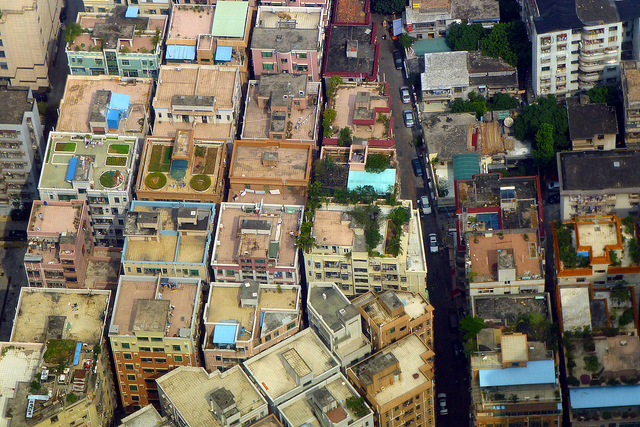Urbanization with Adjectives and Numbers
+ Paul Romer
Yesterday, The New York Times asserted on its front page that a plan to facilitate the movement of 250 million additional people into Chinese cities is a "vast program of urbanization" — a program that would pave over "vast" swaths of farmland.
Everything about urbanization in the developing world (and everything about everything in China) leads to a proliferation of synonyms for big. As entertaining as this flurry of adjectives may be, a better way to convey the underlying magnitudes would be to ask "big compared to what?"
Compared to adjectives, the great thing about numbers is that you can add, subtract, multiply, and divide them. For example, data published by the Urbanization Project's Alain Bertaud show that the residential density in Beijing, Tianjin, Guangzhou, and Shanghai significantly exceeds 10,000 people per sq km of built-up urban area. At this density, 250 million people would require 25,000 sq km of built-up land. China (like the US) has more than 9 million sq km of land. Even if we allow for the possibility that upwards of 2/3rds of the land in China is not suitable for agriculture or urban settlement, 25,000 sq km still represents less than 1% of the 3 million sq km of suitable land.
Numbers also make you pause and think. If people use some land when they move to a new location, don't they also free up some land when they leave their old location? Rural residential densities are at least an order of magnitude lower than urban densities. The rural land that will be freed up for agriculture when 250 million people move to the city will be at least ten times the amount of rural land that will be taken away from agriculture to build-out the new urban areas where people will live, work, and raise their families.
So, the "vast" swaths of new urban development are two orders of magnitude smaller than the available land. More tellingly, the new rural land that urban development will use up is an order of magnitude smaller than the rural land that it will free from residential and small-scale commercial use.
Adjectives are good at firing up emotions. Numbers help us think clearly.


